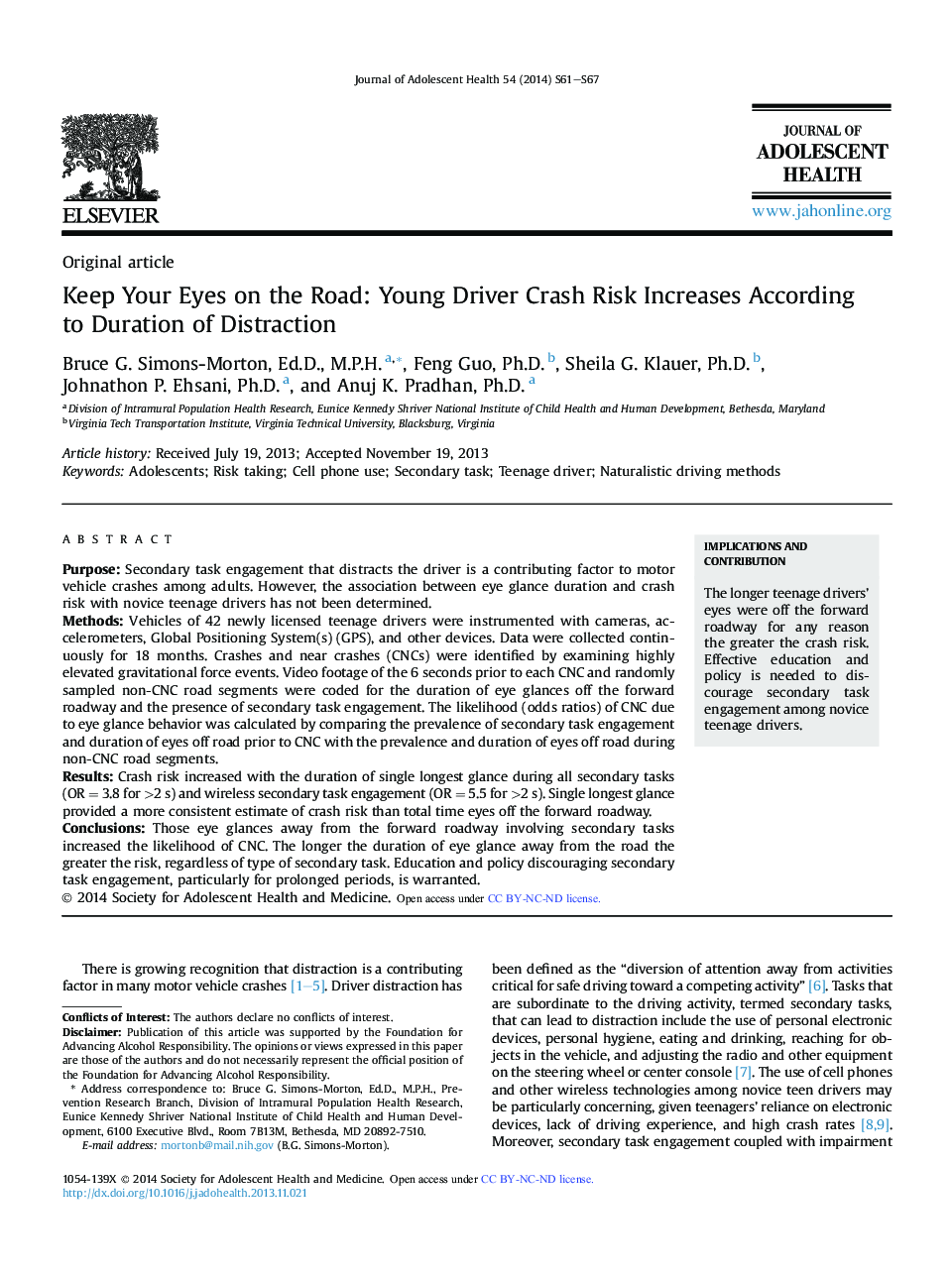| کد مقاله | کد نشریه | سال انتشار | مقاله انگلیسی | نسخه تمام متن |
|---|---|---|---|---|
| 1078782 | 950474 | 2014 | 7 صفحه PDF | دانلود رایگان |
PurposeSecondary task engagement that distracts the driver is a contributing factor to motor vehicle crashes among adults. However, the association between eye glance duration and crash risk with novice teenage drivers has not been determined.MethodsVehicles of 42 newly licensed teenage drivers were instrumented with cameras, accelerometers, Global Positioning System(s) (GPS), and other devices. Data were collected continuously for 18 months. Crashes and near crashes (CNCs) were identified by examining highly elevated gravitational force events. Video footage of the 6 seconds prior to each CNC and randomly sampled non-CNC road segments were coded for the duration of eye glances off the forward roadway and the presence of secondary task engagement. The likelihood (odds ratios) of CNC due to eye glance behavior was calculated by comparing the prevalence of secondary task engagement and duration of eyes off road prior to CNC with the prevalence and duration of eyes off road during non-CNC road segments.ResultsCrash risk increased with the duration of single longest glance during all secondary tasks (OR = 3.8 for >2 s) and wireless secondary task engagement (OR = 5.5 for >2 s). Single longest glance provided a more consistent estimate of crash risk than total time eyes off the forward roadway.ConclusionsThose eye glances away from the forward roadway involving secondary tasks increased the likelihood of CNC. The longer the duration of eye glance away from the road the greater the risk, regardless of type of secondary task. Education and policy discouraging secondary task engagement, particularly for prolonged periods, is warranted.
Journal: Journal of Adolescent Health - Volume 54, Issue 5, Supplement, May 2014, Pages S61–S67
